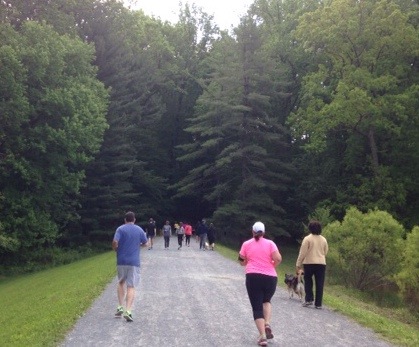
Right now, patients (pregnant people who wish no longer to be so) are scared.
Providers (doctors, dualas, nurses, and support staff) are marginalized and worn thin.
Protectors (clinic escorts, security staff, activists, and lawyers) are frayed. This ritual is to lend your energy, to name your intent to support this beloved community.
What you will need:
- A quiet space to do this work
- That which makes your space centered/clean (incense/candles/etc…)
- 3 threads of string, embroidery floss or strands of yarn – long enough to braid and wind around your wrist, or tie to a bag/journal/something of significance. I suggest white (provider), red (patient), and black (protector).
- A heavy object to hold down the strands while braiding, or tape/a book/someway to secure it. For example, I used the weight of my chalice to hold it in place – you could use a book, or a censor. Consider what you want to weight the work, and what you have on hand.
The ritual
Center yourself
Create your space according to your need, path, and/or tradition
Measure the three threads/yarn naming them
- Patient
- Provider
- Protector
Tie the three threads together in a simple knot by coiling
them together, coiling them into a loop & pulling the ends through (see
this wiki how https://www.wikihow.com/Braid-String
if you need a visual)
Say “our fates are woven” and begin braiding the three threads, stating, as you weave them their name

“Patient
Provider
Protector
“Patient
Provider
Protector”
You’ll pick up speed, you may mix up roles, notice yourself, and what you are weaving together
“Patient
Provider
Protector”
Notice how the braid forms ; how quickly your hands and mouth want to move as you raise energy
“Patient
Provider
Protector”
When you are almost out of thread tie off the braid, stating again
“Our fates are woven”
…continue to say…
“Interdependent”
Then tie the braid to what you had decided will carry this reminder: around your wrist, on your bag, favorite protest pin, or other location, while stating:
“As I tie this to my (what you are tying it to)
I support your fates as my own
To protect
To love
To lend strength, and when this falls away, I will (name a concrete action).”
What to do next
If you are looking for concrete ways to help patients & providers
National Abortion Federation and National Network of Abortion Funds work to financially assist patients (including but not limited to: finding doctors, transportation, childcare, and other practical support). The three organizations assisting in the most recent legal fight are the ACLU, Women’s Law Project, and the Center for Reproductive Rights. There are other groups that assist patients, advocate for providers, and work to protect clinics. Abortion care (like all health care) is a rich tapestry of folks with a variety of talents, and lots of passion and pluck. Here are some grassroots groups––most are Black/BIPOC led and trans inclusive––that can use support. You may also have groups local to you needing assistance.
National Latina Institute for Reproductive Health
Spark Reproductive Justice Now
URGE: Unite for Reproductive & Gender Equity




